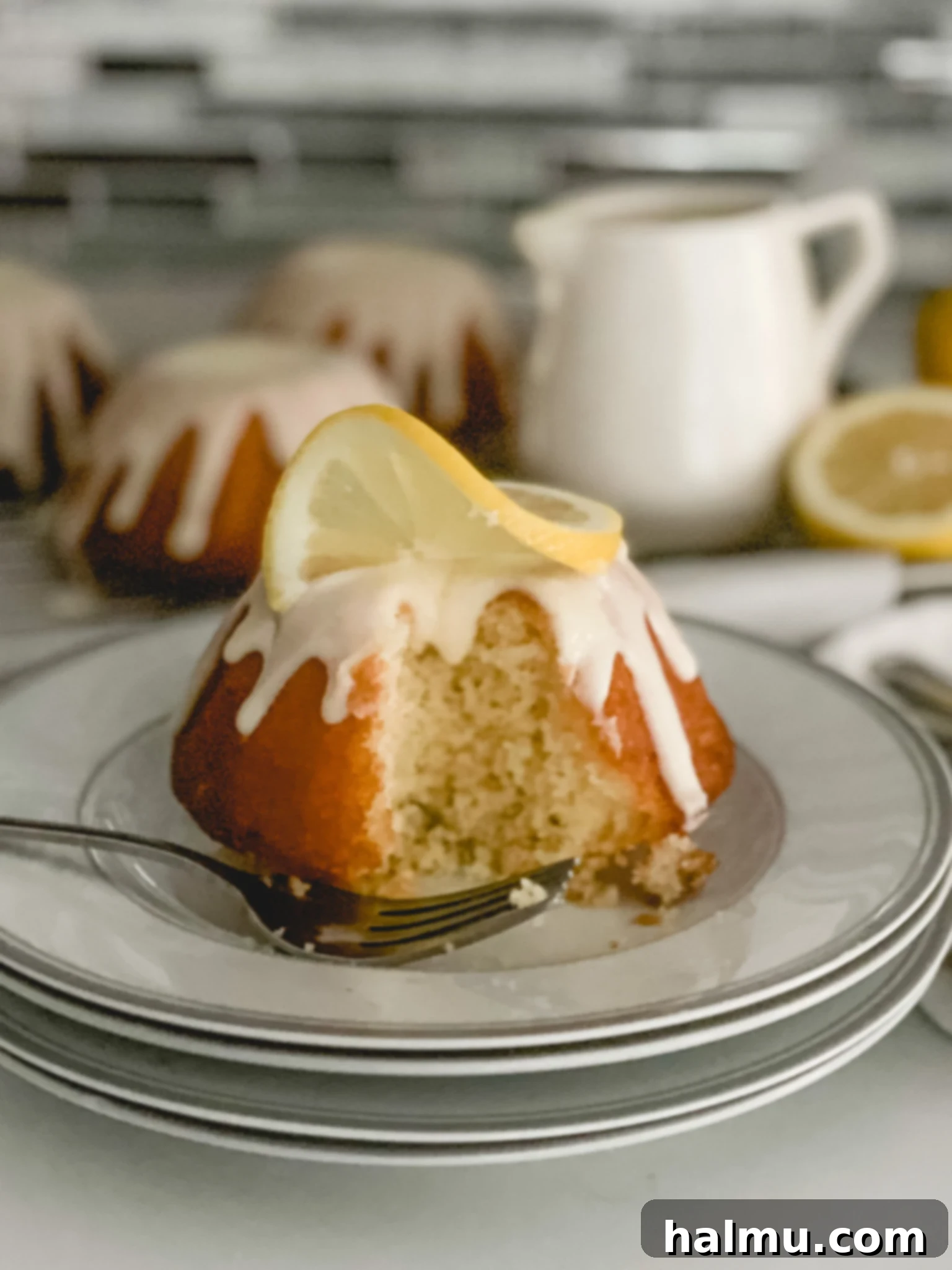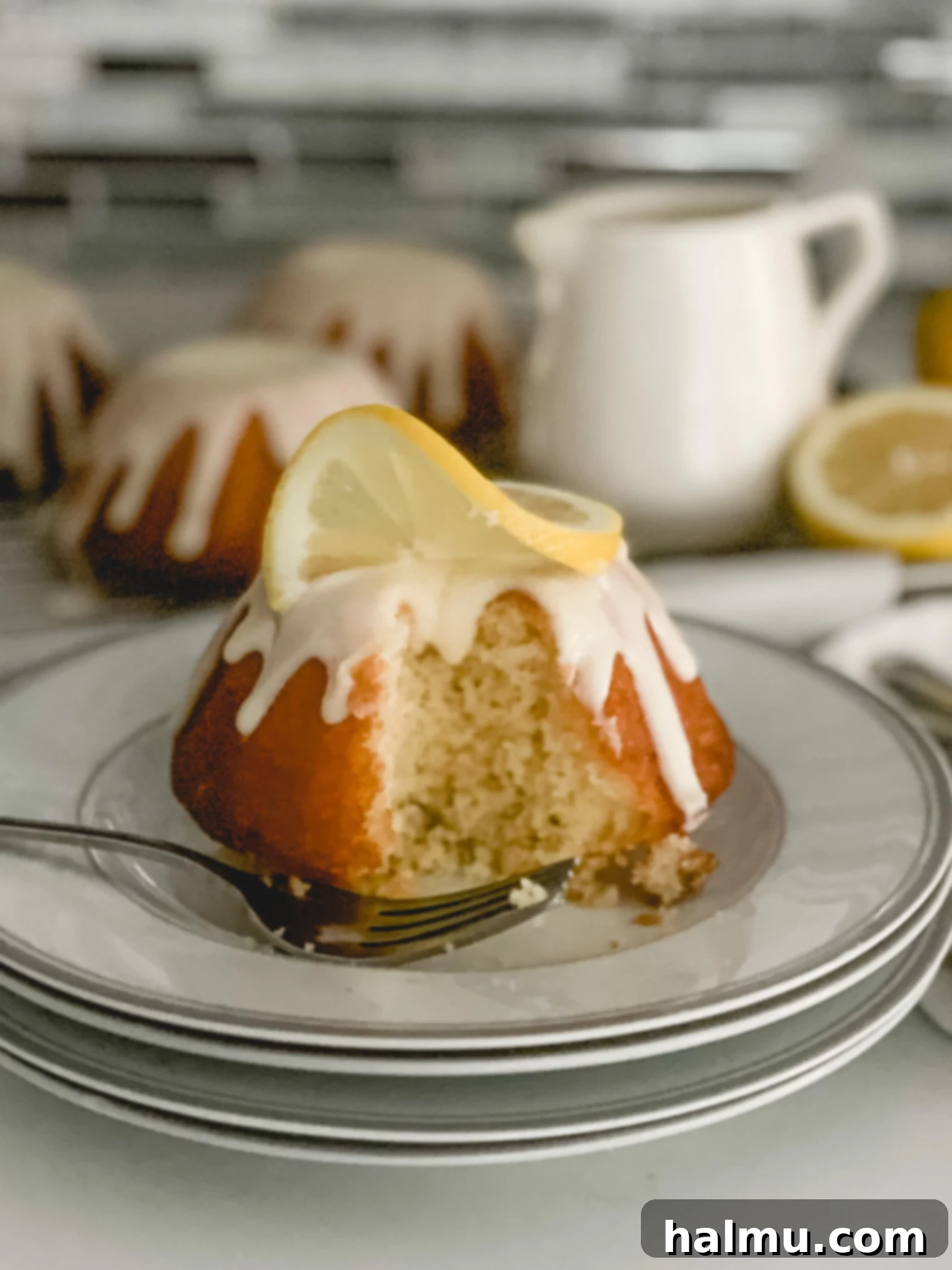
Irresistible Mini Lemon Bundt Cakes: A Zesty Journey to Dessert Perfection
There’s something uniquely comforting and utterly delightful about a perfectly baked lemon bundt cake. Over the years, this particular recipe for mini lemon bundt cakes has become a cherished staple in my family, evolving from a classic Ina Garten foundation into a truly perfected version with my own special touches. It’s a guaranteed crowd-pleaser, a dessert that consistently earns rave reviews from everyone who tastes it – even those who usually shy away from lemon-flavored treats. These individual lemon bundt cakes strike an exquisite balance: they’re wonderfully tart and tangy without being overpowering, harmoniously blended with just the right amount of sweetness.
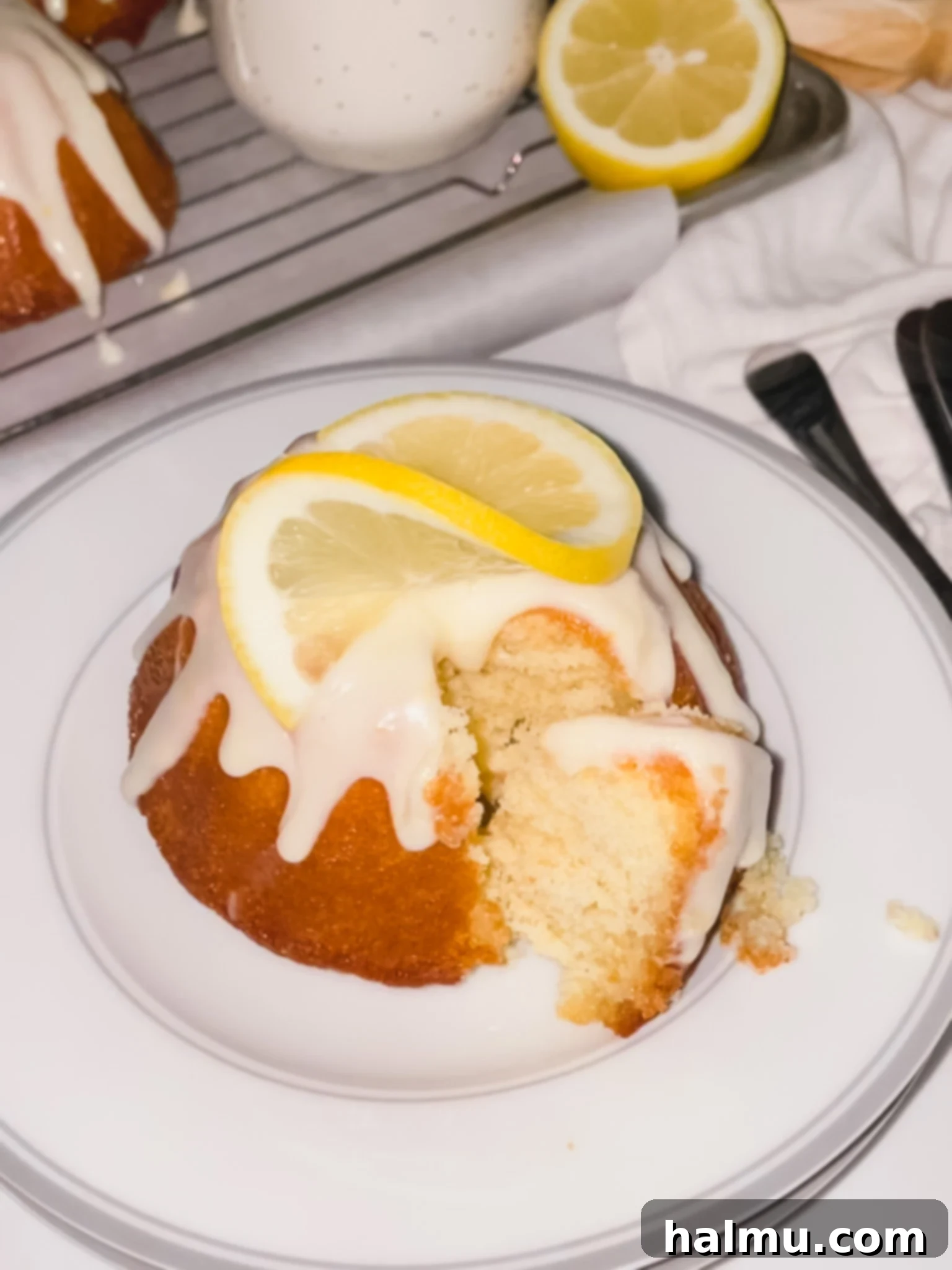
What truly sets these cakes apart is the thoughtful integration of fresh, vibrant lemon flavor into every single component. From the tender crumb of the cake itself to the bright lemon syrup that infuses it, and finally, to the luscious cream cheese glaze that crowns each mini bundt, the citrus essence is perfectly proportioned. Beyond flavor, the interplay of textures creates a truly memorable experience. Imagine a bite where the moist, tender interior of the cake meets a delicate, slightly sugary crunch on the outside, all enveloped by a smooth, creamy glaze. It’s an ensemble of textures that culminates in the most perfect, refreshing mouthful, bursting with the freshest lemon notes.

Key Ingredients for Exceptional Lemon Bundt Cakes
The secret to these bundt cakes’ vibrant flavor lies undeniably in fresh lemons. They are the undeniable stars of this culinary show, providing the essential zest and juice that infuse every layer with their signature freshness and zing. I cannot stress this enough: for optimal results, do not compromise on fresh lemons. If you don’t have them on hand, I strongly recommend waiting until you can acquire some. Any substitute for fresh lemon juice and zest will inevitably alter the nuanced taste and bright profile of this recipe. Here’s a comprehensive list of all the high-quality ingredients you’ll need to ensure you’re fully prepared to bake these delightful mini lemon bundt cakes:
- Unsalted Butter: Essential for richness and a tender crumb.
- Granulated Sugar: Provides sweetness and helps tenderize the cake.
- Fresh Lemons: Both zest and juice are crucial for authentic lemon flavor.
- Large Eggs: Bind the ingredients, add moisture, and contribute to structure.
- All-Purpose Flour: The structural backbone of the cake.
- Baking Powder & Baking Soda: Leavening agents that give the cake its light and airy texture.
- Salt: Balances the sweetness and enhances all other flavors.
- Buttermilk: Adds a subtle tang and keeps the cake incredibly moist.
- Vanilla Extract: Aromatic enhancer that complements the lemon beautifully.
- Cream Cheese: The base for our irresistibly tangy and smooth glaze.
- Powdered Sugar: Creates the perfect sweet and smooth glaze consistency.

Crafting the Perfect Mini Lemon Bundt Cakes: A Trilogy of Flavor
The magic of these mini lemon bundt cakes lies in their three distinct, yet perfectly harmonious, components. Each plays a vital role in creating a dessert that is truly greater than the sum of its parts.
The Exquisite Lemon Cake Batter
Our journey to the perfect lemon bundt cake begins with the batter, a foundation of exceptional flavor. The first critical step involves combining the granulated sugar with fresh lemon zest. I always recommend taking a moment to rub this mixture together between your fingertips. This simple action helps to release the potent, fragrant oils from the lemon zest, intensifying the citrus aroma and flavor that will permeate every bite of the cake. This “lemon sugar” is then creamed thoroughly with the butter until the mixture is light, fluffy, and pale in color, indicating that sufficient air has been incorporated for a tender crumb. Eggs are then added one at a time, ensuring each is fully incorporated to maintain the emulsion. For the dry ingredients, you’ll sift together the all-purpose flour, baking powder, baking soda, and salt. Simultaneously, whisk together the fresh lemon juice, buttermilk, and vanilla extract for your wet ingredients. The key to a smooth, uncurdled batter is to alternate adding these wet and dry mixtures, starting and ending with the flour. This process involves three additions of the dry ingredients and two additions of the wet, ensuring you don’t overwhelm the batter with too much liquid at once. Mix only until just combined after each addition to avoid overdeveloping the gluten, which can lead to a tough cake. This careful technique results in a beautifully smooth and vibrant batter.

The Essential Lemon Syrup
Once baked, the warm cakes are elevated to new levels of moistness and flavor with a quick dip in our simple yet profoundly impactful lemon syrup. This sticky, sweet concoction is essentially a lemon simple syrup, made from just sugar and fresh lemon juice. The beauty of this syrup lies in its application: you’ll generously soak the warm cakes with it immediately after they come out of the oven, even before unmolding them. This allows the hot syrup to penetrate deeply into the cake’s structure, ensuring maximum absorption. Once the cakes are gently flipped out of their pans, an additional brushing of syrup is applied to their tops. This double application not only adds an incredible boost of lemon flavor and keeps the cakes exceptionally moist but also creates a delicate, subtle sugary crust on the outer layer, providing a delightful textural contrast to the tender interior of the cake. This step is crucial for achieving that signature bundt cake moistness and a wonderfully vibrant lemon kick.

The Luscious Lemon Cream Cheese Glaze
No lemon bundt cake would be complete without a luxurious glaze, and ours is a rich, tangy lemon cream cheese masterpiece. This glaze begins with the perfect icing consistency, which is then gently warmed to achieve a smooth, pourable texture ideal for drizzling over the cakes. The secret to an utterly smooth and lump-free glaze lies in properly combining the cream cheese and unsalted butter. Ensure both are at room temperature, then beat them together with an electric mixer until the mixture is completely uniform and velvety. Only then should you incorporate the powdered sugar, additional fresh lemon zest, and a splash of lemon juice. To transform this icing into a pourable glaze, I gently warm it in the microwave in short bursts, typically 20-second increments, stirring thoroughly after each. This gentle heating ensures a consistent, glossy finish. For easy glazing and cleanup, I recommend placing the cooled cakes on a wire rack set over a sheet of parchment paper or aluminum foil. This setup catches any drips, making post-baking tidying a breeze. Then, drizzle away – whether you prefer a delicate ribbon or a generous cascade, the choice is yours!
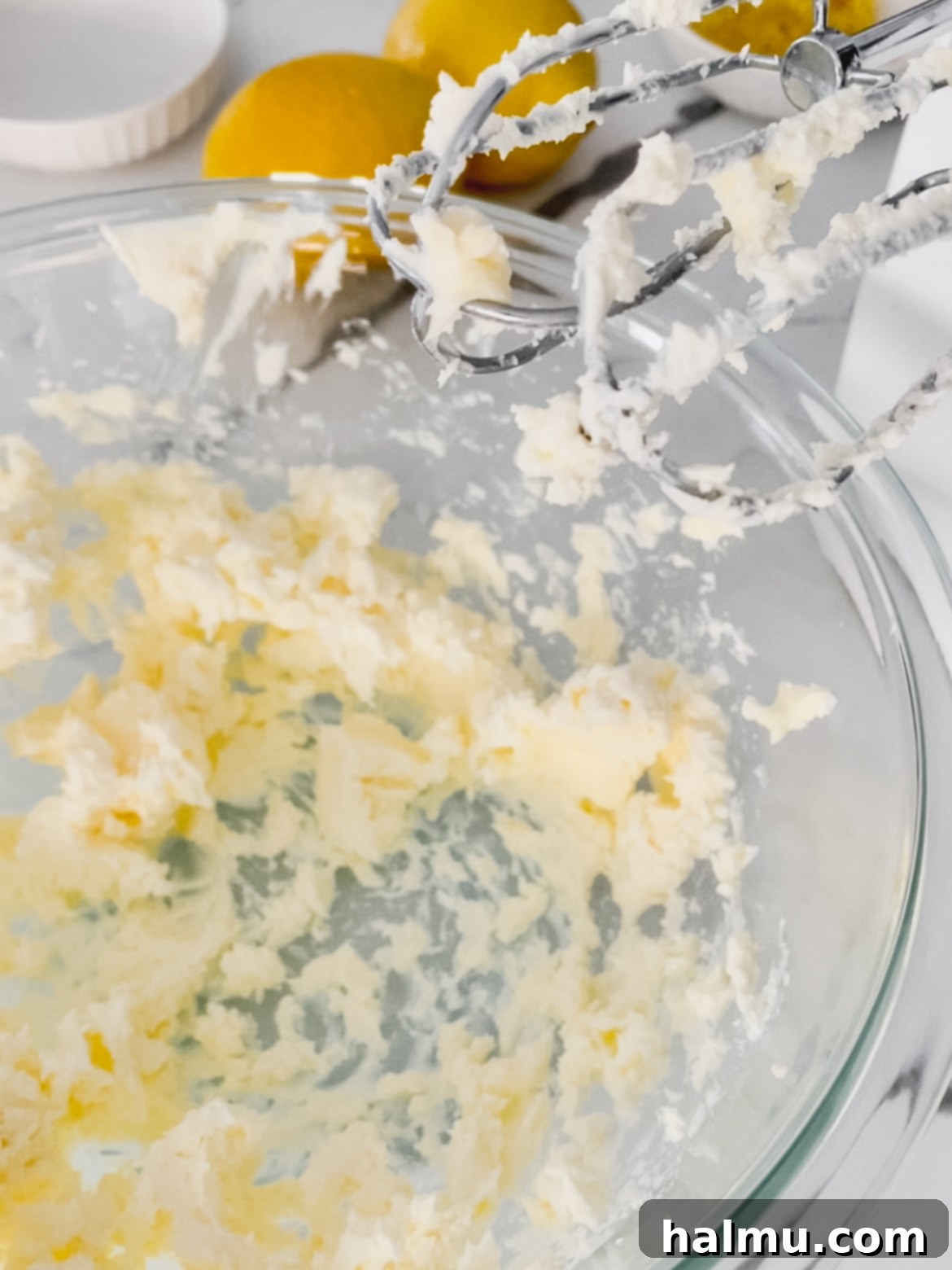
Mastering Your Bundt Pan: Essential Tips for Flawless Cakes
Baking with bundt pans can sometimes feel like a high-stakes endeavor, with the nerve-wracking moment of unmolding always looming. I’ve certainly experienced my share of ruined cakes – all that time and effort, only for half the cake to remain stubbornly stuck in the pan. To help you avoid this common baking heartache and ensure your beautiful mini bundt cakes emerge perfectly intact every time, follow these crucial tips:
- Butter and Flour the Pans Meticulously. This step is non-negotiable and worth every bit of extra time. Start with room-temperature unsalted butter, which spreads more smoothly and evenly. Use a pastry brush or your fingers to apply a generous and uniform layer of butter, making sure to reach into every single crevice, indentation, and intricate design of the bundt pan. No spot should be missed! Immediately after buttering, dust the pan thoroughly with flour. Rotate the pan on its side while gently tapping it, allowing the flour to adhere to every buttered surface. Once fully coated, invert the pan and tap out any excess flour. This creates a non-stick barrier that is surprisingly effective.
- Pour Hot Syrup Over Hot Cake. The timing and temperature for the lemon syrup application are key. I’ve found that applying the hot syrup to the cakes immediately after they emerge from the oven, while both the cake and the syrup are still hot, yields the best results. The heat allows the cake to absorb the syrup more efficiently, infusing it with maximum moisture and flavor. Equally crucial is the cooling period before unmolding: allow the cakes to cool for precisely 10 minutes after pouring on the syrup. This short cooling window allows the cake to set slightly while remaining warm enough to release easily. You may need to give the bundt pan a few gentle taps on your counter, but at this point, the cake should release without struggle.
- Invest in a Quality Bundt Pan. The quality of your bundt pan significantly impacts your success. Pans made from silicone or high-quality nonstick metal will consistently provide the best results. These materials offer superior release properties. I’ve encountered the most trouble with older, well-used bundt pans whose nonstick coating has worn off, chipped, or scratched over time. While it might seem like an extra expense, investing in a new, high-quality bundt pan with a durable nonstick finish is truly worth it for consistently perfect, beautifully shaped cakes.
However, if despite all your best efforts, the unthinkable happens and your cake sticks to the pan, don’t despair! There’s no need to panic. You can absolutely salvage your efforts and transform it into an equally delicious and visually appealing dessert. Simply break up the cake into pieces and layer them with the luscious lemon cream cheese glaze, perhaps adding fresh lemon slices or berries for extra flair. What was meant to be a bundt cake can become a stunning trifle. It will still taste incredibly good, and no one will ever know it wasn’t its original intended form!

Serving Suggestions and Delicious Variations
These mini lemon bundt cakes are wonderful on their own, but a few touches can elevate them even further. A simple garnish of fresh lemon zest, a thin lemon slice, or a few fresh mint leaves adds a beautiful visual appeal and a burst of complementary aroma. For an extra treat, consider serving them alongside a scoop of vanilla bean ice cream or a dollop of fresh whipped cream, especially during warmer months.
Feeling adventurous? These bundt cakes are also fantastic canvases for creative variations:
- Lemon Poppy Seed: Add 2 tablespoons of poppy seeds to the dry ingredients for a classic flavor and delightful texture.
- Berry Bliss: Fold in a handful of fresh blueberries or raspberries into the batter just before baking for a burst of fruitiness.
- Lavender Lemon: Infuse the sugar with a teaspoon of dried culinary lavender for a sophisticated floral note.
- Coconut Lemon: Mix in some shredded coconut into the batter and sprinkle some on top of the glaze for a tropical twist.
More Zesty Lemon Recipes You’ll Adore
If you’ve fallen in love with the bright, refreshing flavor of these mini lemon bundt cakes, you’re in for a treat! Lemon is a versatile and beloved ingredient in baking, capable of creating a wide array of delightful desserts. Explore more of my favorite lemon-infused recipes:
- Lemon Brûlée Bars
- Lemon Mascarpone Tart
- Lemon Curd Cookies
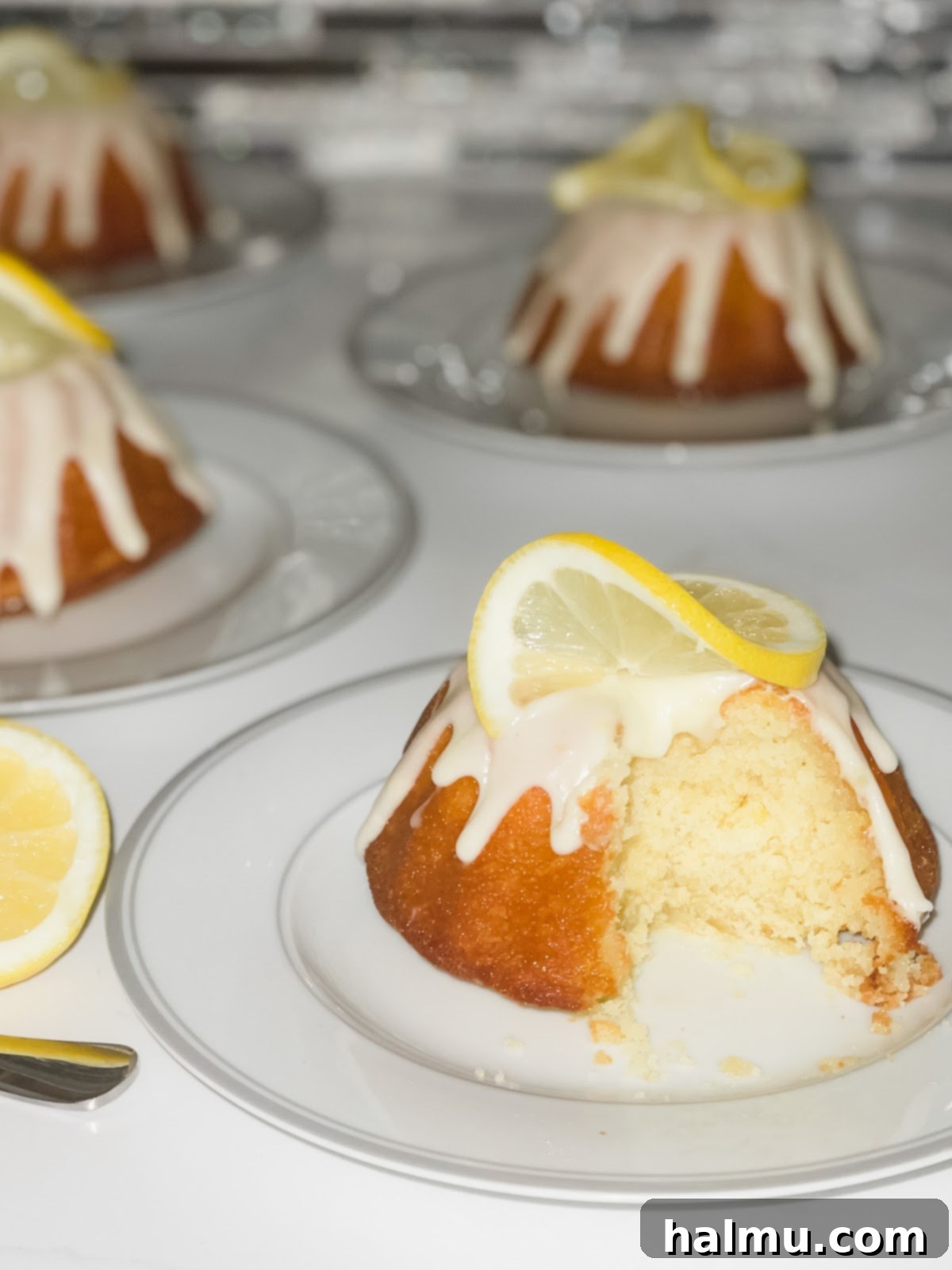
I truly hope you and your loved ones enjoy baking and savoring these Mini Lemon Bundt Cakes as much as my family and I do. They are more than just a dessert; they are a bright ray of sunshine on any table, perfect for special occasions or simply to brighten an ordinary day. Happy baking!
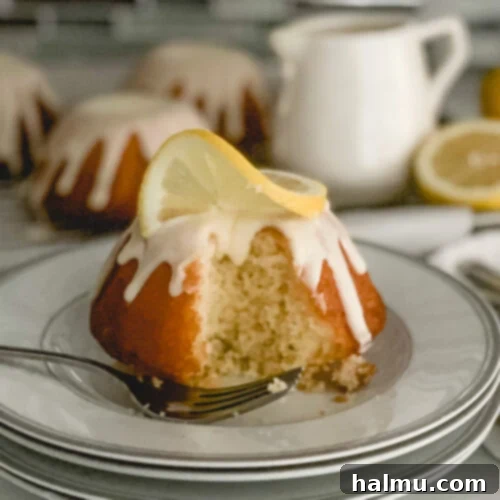
Lemon Bundt Cakes
These luscious mini Lemon Bundt Cakes are bright and tart, with just the right amount of sweetness. The perfect cake for Spring!
Author: Rachel
Pin Recipe
Print Recipe
Rate This Recipe
Prep Time: 50 mins
Cook Time: 45 mins
Total Time: 1 hr 35 mins
Yield: 4 mini cakes
Ingredients
Lemon Cake:
- 1/2 cup (1 stick or 113g) unsalted butter, at room temperature, plus 2 Tablespoons for greasing pans
- 1 cup (200 grams) granulated sugar
- 3 Tablespoons lemon zest, from about 3 lemons
- 2 large eggs, at room temperature
- 1 1/2 cups (195 grams) all-purpose flour, plus 2 Tablespoons for coating pans
- 1/4 teaspoon baking powder
- 1/4 teaspoon baking soda
- 1/2 teaspoon salt
- 2 Tablespoons fresh lemon juice
- 1/4 cup plus 2 Tablespoons (88mL) buttermilk, at room temperature
- 1/2 teaspoon vanilla extract
Lemon Syrup:
- 1/2 cup (100g) granulated sugar
- 1/2 cup (115g) lemon juice
Lemon Cream Cheese Glaze:
- 4 ounces (117g) cream cheese, at room temperature
- 5 Tablespoons (70g) unsalted butter, at room temperature
- 2 cups (250g) powdered sugar
- 1 Tablespoon lemon zest
- 1 Tablespoon fresh lemon juice
Shop Ingredients
Instructions
- Preheat oven to 350°F (175°C). Generously butter and flour four 4-inch bundt pans. Alternatively, you can grease and flour one loaf pan that measures 8 1/2-inches by 4 1/4-inches.
- Lemon Cake: Combine the sugar and lemon zest with your fingers, rubbing to release the oils in the zest.
- In the bowl of a stand mixer fitted with a paddle attachment, cream the butter and the sugar mixed with the lemon zest until fluffy and light in color, about 2-3 minutes.
- With the mixer on medium speed, add the eggs one at a time, combining well after each addition. Scrape the bowl well.
- Sift together the flour, baking powder, baking soda, and salt. Combine the lemon juice, buttermilk, and vanilla. Alternate adding the flour and buttermilk mixtures, starting and ending with the flour. Mix until just combined after each addition and scrape down the bowl a few times during the process.
- Divide the batter evenly between the four bundt pans. Bake for 25-30 minutes, or until the cake springs back to the touch or a toothpick comes out clean. If baking in a loaf pan, the baking time will be around 45 minutes.
- Lemon Syrup: Combine the sugar and lemon juice in a saucepan. Cook on low until the mixture simmers.
- Pour half of the hot lemon syrup over the cakes, as soon as they come out of the oven (before turning out of the pans). Let the cakes cool for 10 minutes then flip each bundt onto parchment paper and tap gently to remove from pans. Brush the tops of the cakes with the second half of the syrup. If using a loaf pan, you can pour all of the syrup over the top and sides to let it run to the bottom of the pan.
- Lemon Cream Cheese Glaze: Combine the cream cheese and butter with an electric mixer until well combined and smooth with no lumps remaining. Add the powdered sugar, lemon zest, and lemon juice, mixing just until fully combined.
- Warm up the Lemon Cream Cheese glaze in the microwave in 20-second increments, stirring in between until it reaches a pourable, glaze-like consistency. Drizzle the icing over the cakes, top each with a fresh lemon slice, and enjoy!
Did you make this recipe?
Be sure to tag @sweetkitchencravings on Instagram!
